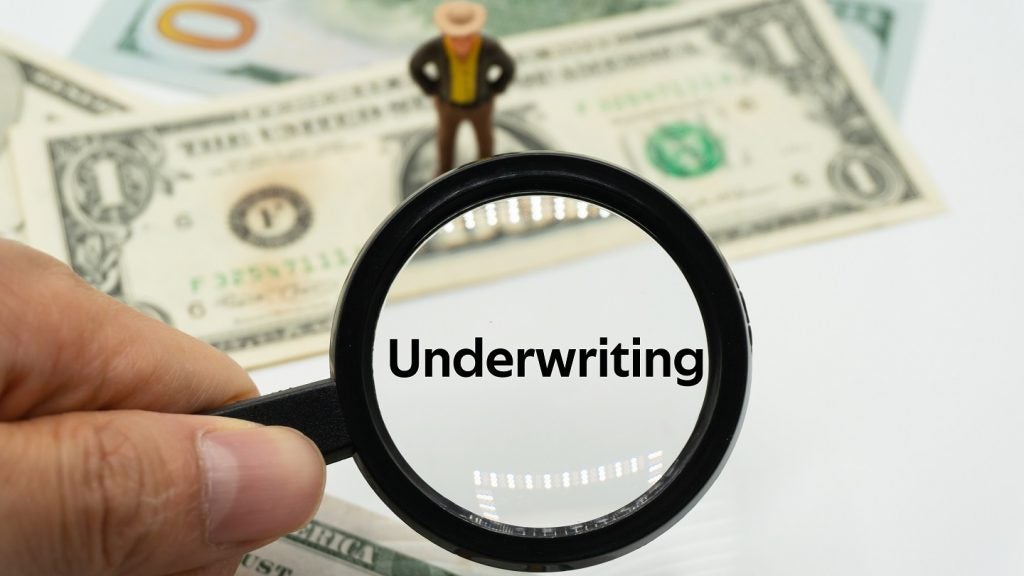INVESTMENTS
US life insurers set to take
hammering from commercial real estate
Still repairing financial damage
caused by residential property losses, US insurers face the
prospect of hefty losses on commercial real estate (CRE), warns
rating agency Fitch.
Based on its assessment, Fitch believes
weakening CRE fundamentals are set to trigger a jump in defaults
across all segments of commercial property which – on its
conservative estimate – will result in the US life industry
sustaining losses of between $15.7 billion to $19.1 billion in the
“near to intermediate-term.”
While most life insurers have yet to recognise
material losses on their CRE-related investments, Fitch noted a
sizeable portion of their assets are entrenched in commercial real
estate.
According to the rating agency, the US life
industry’s capital totalled $228 billion on 30 June 2009 while
statutory net earnings in the first half of 2009 were $22.4
billion.
How well do you really know your competitors?
Access the most comprehensive Company Profiles on the market, powered by GlobalData. Save hours of research. Gain competitive edge.

Thank you!
Your download email will arrive shortly
Not ready to buy yet? Download a free sample
We are confident about the unique quality of our Company Profiles. However, we want you to make the most beneficial decision for your business, so we offer a free sample that you can download by submitting the below form
By GlobalDataREGULATION
Grip tightening on US financial
companies
The US House of Representatives’
Financial Services Committee (FSC) has passed an amendment to the
Financial Stability Improvement Act that would empower federal
regulators to “rein in and dismantle financial firms that are so
large, interconnected, or risky that their collapse would put at
risk the entire American economic system.”
Ominously, it could be argued, this would
include even if those companies currently appear to be
well-capitalised and healthy.
According to the FSC, the amendment considers
a variety of objective standards to determine if financial
companies pose a threat to financial stability – including the
scope, scale, exposure, leverage, interconnectedness of financial
activities – as well as size of the financial company.
The amendment does not cap the size of
financial companies.
COMPANIES
New York Life puts in a
sterling performance
Beating the odds in the first nine
months of 2009, New York Life (NYL) increased its agency life
insurance sales by 8 percent compared with the same period in
2008.
For the US’s largest mutual insurer, this
represents record first nine-month sales and comes against the
background of the US life industry’s 19 percent fall in annualised
premium income in the first nine months of 2009, as reported by
industry organisation LIMRA.
“Having the best year on record is strong
evidence that consumers want the comfort of guarantees from
financially strong insurers, and they’ve been very receptive to
hearing from their New York Life agents,” commented Mark Pfaff,
NYL’s executive vice-president, US Life and Agency.
NYL’s performance comes at a time when overall
industry sales are the worst in 70 years, he added.
Helping drive its sales, NYL is engaged in an
expansionist strategy with new agent recruitment in the first nine
months of 2009 up 9 percent compared with the same period in
2008.
In 2008 NYL reported insurance sales of $2.4
billion, an increase of 13 percent compared with 2007, while
investment sales were up 7 percent at $26.6 billion.
COMPANIES
Greenberg and AIG declare end
to hostilities
American International Group (AIG)
and former AIG chairman Maurice “Hank” Greenberg have agreed to
settle all disputes between them, ending a long-running battle
sparked by Greenberg’s ousting from AIG in 2005.
Also covered by the settlement are CV Starr
& Company and Starr International, specialty general insurers
controlled by Greenberg, and AIG’s former chief financial officer
Howard I Smith.
Under the agreement, an independent third
party will decide which of Greenberg’s and Smith’s claims for past
legal fees and expenses AIG is legally obligated to pay under AIG’s
charter and by-laws and the laws of the state of Delaware.
The maximum sum for which AIG could be
responsible is $150 million.
Reacting to the announcement, Greenberg said
in a statement: “I too am pleased that these long-running disputes
are now over, and I want to express my appreciation for Bob
Benmosche’s help, and the help of the AIG Board, in resolving
them.”
In his statement, with which Smith concurred,
Greenberg was referring to AIG’s recently appointed president and
CEO Robert H Benmosche.
Also included under the agreement is return to
Greenberg by AIG of a number of his personal items including a
photograph of Cornelius Vander Starr together with Greenberg.
Vander Starr founded AIG in China in 1919
under the name American Asiatic Underwriters.
REGULATION
CIOPS dishes up capital shock
for EU insurers
The Committee of European Insurance
and Occupational Pensions Supervisors (CIOPS) has recommended a
significant further strengthening of capital requirements for
insurers under the Solvency II regulatory regime to be implemented
in October 2012.
Assessing the draft advice, consultancy Watson
Wyatt noted that CIOPS has increased its estimate of total capital
requirements for the whole European Union (EU) insurance industry,
with life insurers and reinsurers being worst affected.
This change, explained Watson Wyatt, was
prompted by market events during the past two years that have had a
direct influence on the stresses applied to shares, property and
corporate bonds and to assumptions about diversification of
risk.
The CIOPS’ recommendation forms part of its
third set of draft advice on the rules covering the vast majority
of Solvency II Level 2 implementing measures.
The draft advice is open for consultation
until 11 December 2009.
ANNUITIES
UK VA sales take a
dive
Insurers that have ventured into the
UK’s under-developed variable annuity (VA) market will have been
disheartened by third-quarter sales, which according to consultancy
Watson Wyatt slumped from £343.7 million ($560 million) in the
second quarter of 2009 to £143.1 million.
“These figures are indicative of challenging
economic times for businesses and individuals and also reflect
Hartford’s withdrawal from the marketplace,” commented Andy
Sanders, a senior consultant at Watson Wyatt.
Sanders was referring to US insurer The
Hartford’s decision earlier this year to suspend writing new VA
business in the UK and Japan.
Despite the sharp fall in VA sales, Watson
Wyatt believes there is still a place for VA’s – or as it terms
them, third way products – in the UK.
Watson Wyatt stressed that growth anticipated
in the at-retirement market presents a “sizeable commercial
opportunity” for existing providers and those who believe there is
long-term potential in pursuing market entry.
“Reinvigoration of this [VA] market may be
needed to remind consumers and advisers of the virtues of ‘third
way’ propositions like variable annuities as alternatives to
conventional annuities and income drawdown,” said Saunders.
COMPANIES
Grey to drive Allianz’s global
communications
In a hard-fought battle which began
in spring 2009, UK-based advertising agency Grey has been awarded a
contract by European insurer Allianz to oversee the group’s
worldwide brand communications.
The contract covers brand
communication, digital, internal engagement, corporate design,
sponsoring and the Allianz Group media budget.
In winning the contract Grey, a unit of US
communications services company WPP, faced stiff competition from
DDB Berlin, Young & Rubicam and Allianz’s outgoing advertising
agency BBDO.
Though Allianz did not provide financial
details, advertising media reports put the value of the contract –
commencing in 2010 – at about $100 million.
“Grey presented the best strategy for a close
integration of our brand and business, along with a road map for
the new positioning of our brand communication,” commented Steven
Althaus, senior vice-president of global brand management at
Allianz.
INVESTMENTS
Standard Life takes optimistic
European property view
UK insurer Standard Life is taking a
positive view on the recovery potential of Europe’s commercial
property market with its proposed launch of the Standard Life
Investments Property Recovery Fund (PRF).
A closed-end fund, PRF will have a
five-year limited partnership (LP) structure and is Standard Life
Investments’ first LP offering.
Standard Life, which is targeting investors
who can commit a minimum investment of £50,000 ($80,000), aims to
raise up to £75 million in equity for the PRF and through borrowing
seek to leverage the property portfolio by 60 percent to a gross
asset value of £180 million.
“The fund has been specifically structured to
provide professional investors with the opportunity to capitalise
on our expectations for a recovery in property market returns,”
said Barry MacLennan, Standard Life Investments’ investment
director.
“On a range of measures, we believe that
commercial property is currently attractively priced and we would
expect it to be of particular interest to tax-exempt
investors.”
Standard Life Investments is targeting an
annualised return of 12 percent net of taxes, charges and other
liabilities from the PRF which will have an “opportunistic and
focused portfolio” of European (including UK) commercial property
investments.
PENSIONS
UK defined benefit deficit
jumps by £10bn
Aon Consulting had bad news for
sponsors of the 200 largest privately-sponsored UK defined benefit
pension schemes, when it released data for November 2009 showing
that the combined deficit of the schemes jumped to £88 billion
($140 billion) from £78 billion in October.
It is a situation unlikely to
improve soon, warned Aon.
Illustrating the scale of the challenge, Aon
estimates that to reduce the deficit to zero over the next seven
years would require the UK’s benchmark equity index, the FTSE100,
to sustain an 11 percent annual increase or for companies to
increase their annual contributions by £15 billion.
“There is no quick fix imminent in financial
markets and the size of the challenge for UK companies is immense,”
commented Marcus Hurd, head of corporate solutions at Aon
Consulting.
He stressed that as things stand, the
inescapable reality is that pension deficits are here to stay until
the final salary scheme is passed across to an insurance
company.
INVESTMENTS
Allianz goes wind farming in
France
Continuing a strategy of investment
in renewable energy projects announced in 2005, European insurer
Allianz has acquired two electricity generating wind farms in
France with a combined capacity of 22.5 megawatts.
The price paid for the wind farm
investments, which will be housed in Allianz’s Specialised
Investments unit, was not disclosed.
“We are pleased to have acquired these two
wind farms from Nordex and thereby increase our activities in
France,” said David Jones, CEO of Allianz Specialised
Investments.
“These latest investments also take our
operational asset base in Europe to over 300 megawatts,” he
added.
In the renewable energy arena, Allianz has
stated that it primary focus is on wind and solar photovoltaic
electricity-generating solutions.
NEW PRODUCTS
Aviva adds with-profits
guarantee option
Clearly taking the view that
investment markets will continue their recovery, Aviva has launched
a new product within its main With-Profit Fund offering UK
customers a continuous money-back guarantee option for new
with-profits investments.
The product is being marketed as the
Aviva With-Profit Guarantee Option.
Customers opting to take advantage of the
increased security offered will be required to invest for at least
five years before the money-back guarantee becomes applicable.
The charge for the guarantee is an extra 0.7
percent a year for the first five years and the minimum investment
is £5,000 ($8,000).
“Customers tell us that they are looking for a
return that is better than a bank or building society account
without taking too much risk with their money,” said Aviva’s
marketing director David Barral.
“By taking advantage of the With-Profit
Guarantee Option, customers can benefit from potential increases in
property and shares, with the peace of mind of a money-back
guarantee providing they invest for at least five years.”
ANNUITIES
UK annuity rates
slide
Tough times have just got tougher
for pre-retirees in the UK with annuity rates hitting a new low,
according to research firm Life & Pensions Moneyfacts
(LPM).
In a study released in early-December, LPM
noted that after holding steady
for some time annuity rates have been in
decline for the past two months.
Specifically, the average rate for a male aged
65 purchasing a level without guarantee annuity based on a £10,000
($16,000) purchase price has decreased by 3.3 percent since
September 2009, while the equivalent female annuity has seen a 3.6
percent reduction.
Over the past 15 years, LPM’s data shows the
drop is extremely severe, with male annuity rates now 45 percent
lower and female rates 42 percent lower.
Based on the £10,000 annuity purchase example,
a man aged 65 would have on average received £1,145 annually in
November 1994 and a woman aged 65 £1,016 on average. By November
2008 this had fallen to an average of £701 for men and £658 for
women, and by November 2009 to £625 for men and £585 for women.
The difference between the highest and lowest
standard annuity rates can be as much as 13 percent, noted LPM.







